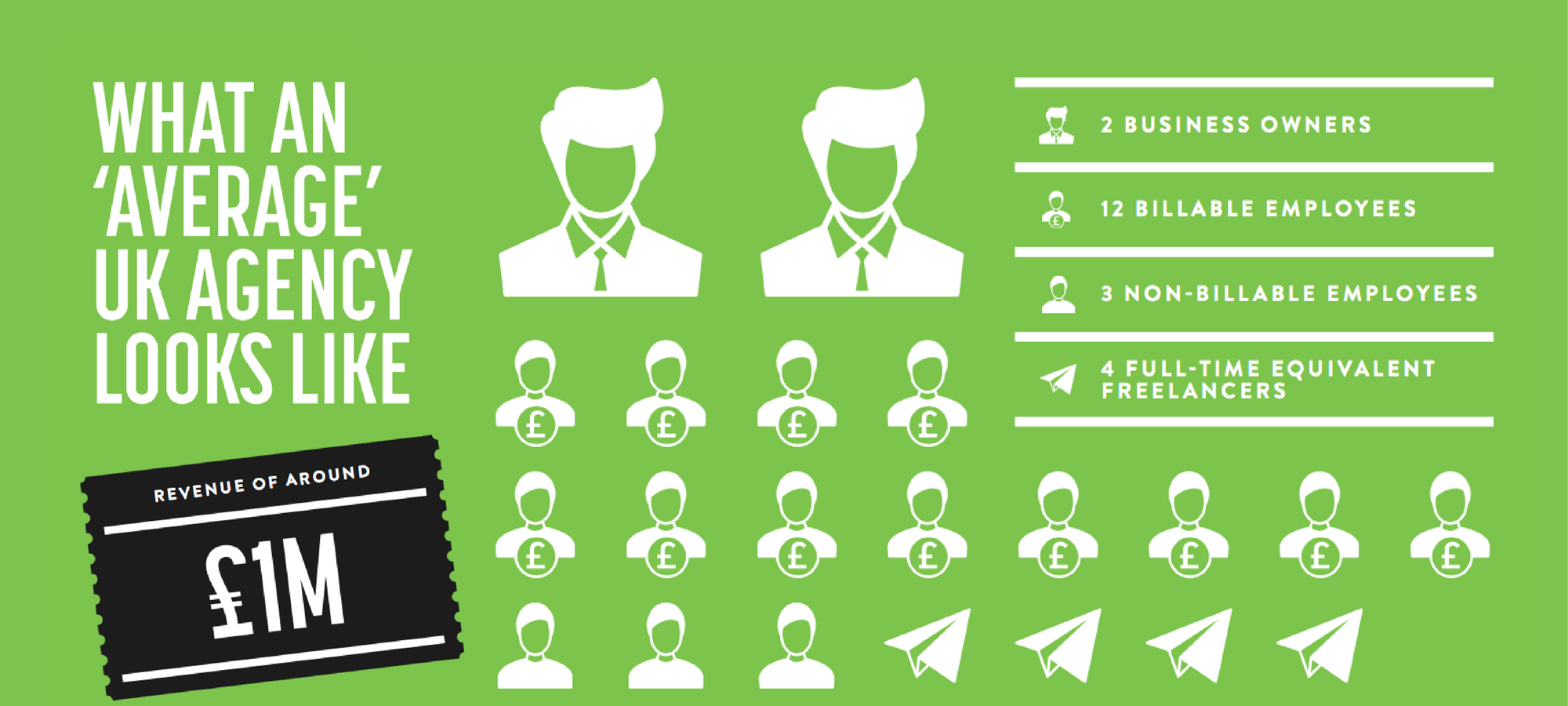
Make 2019 the most profitable yet for your agency
We see so many agency owners get fixated on growth, forgetting that creating growth without profit...
Six years ago, we began our agency benchmarking report - BenchPress. The aim was simple; to take an accurate snapshot of agency life in the UK and to share insight and analysis with ambitious agency owners.
BenchPress has grown to be the biggest survey of its kind in the country, and as each unique participating agency has changed over the years, statistics and trends have developed with them. We take a look at some of those changing trends, showing some of the key findings in recent years.
Each year, the average hourly rate for agencies has risen, and the variance amongst agency rates has decreased. This trend is still increasing, with 55% of agencies intending to raise their prices this year.
The current average hourly rate is £86 per hour, and there has been a reduction in agencies that were charging £50 per hour or less. In just one year, it dropped from 11% of agencies to just 3%.
This is reflected in average project values, with many agencies increasing their minimum project values. 52% won’t work on projects less than £5,000. For 10% of agencies, this threshold is £25,000. There’s also a correlation between agency profitability and size of projects. The most profitable agencies tend to focus on these larger projects.
As agencies grow, there is a lot of positivity for the UK job market this year. Two-thirds of agencies stated their intention to recruit this year, strengthening their workforce by an average of 26%. For a twenty person agency, this would mean hiring five new staff.
With the average staff turnover rate for agencies being 17% each year, the need to recruit is also strongly accompanied by the need to retain talent. This turnover rate has prompted many agencies to invest in staff retention strategies to help them keep their best talent in a competitive marketplace.
What were once considered perks by staff are now expected as the minimum. For example, 73% of agencies now offer flexible working as part of their benefits package. Free food and beanbags are no longer enough. Many agencies are now investing heavily in training and development programmes, to help them retain their best talent.
Brexit was a key theme in this year’s survey with 84% of agency owners admitting to opposing the UK’s departure from the European Union.
More than half (52%) of agency owners have yet to notice any knock-on effect on their businesses following a decisive public referendum in June 2016.
Indeed, less than a third of agencies (29%) have experienced clients cancelling projects as a result of uncertainty around Brexit, while 11% have instead recorded increases in overseas work as a result of the devaluing of the Pound.
Based on responses from the 471 agencies that took part in our latest survey, the ‘average’ UK agency has revenue of around £1 million, has two business owners, twelve billable employees, three non-billable employees and four full-time equivalent freelancers.

But, who wants to be average? Many agencies are thriving right now, with 15% making more than 30% net profit, and 10% planning on increasing revenue by more than 50%. So, what are the top-performing agencies in the creative industry doing to make their businesses grow? Some clear themes and commonalities come out over the years, which we discussed in a recent webinar.
Watch webinar

We see so many agency owners get fixated on growth, forgetting that creating growth without profit...

As accountants specialising in creative businesses, we've worked with hundreds of agencies over the...

Peter Czapp co-founded The Agency Collective, inspired by his work with hundreds of agencies at The...